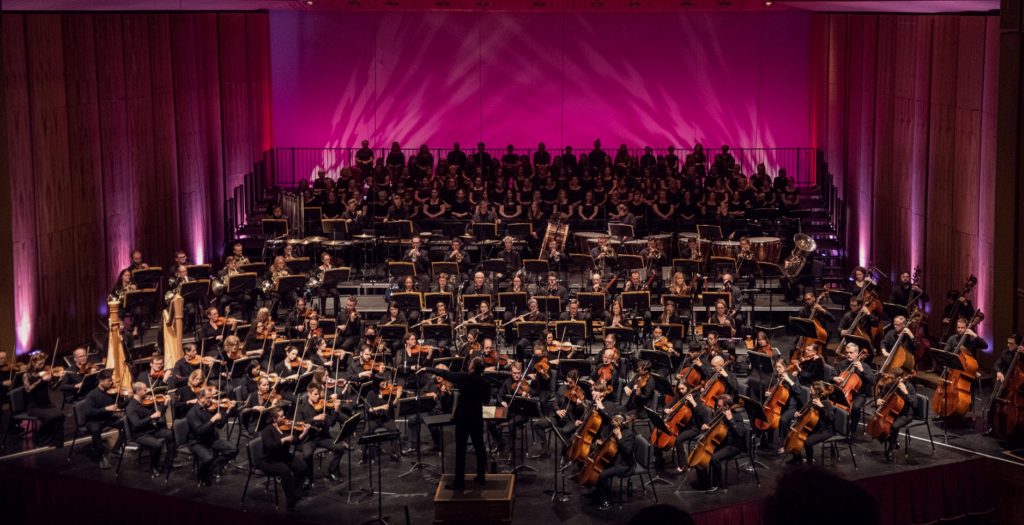by Kevin McLaughlin

But the whole world? Yes — and heaven, too.
The Third Symphony, written between 1895 and 1897, is Mahler’s longest and grandest. Many orchestras pass on it, due to the swollen forces required (lots of winds, brass, and percussion) and the huge lift asked of every section. The Akron Symphony, led by music director Christopher Wilkins, lifted it all very high on Saturday, April 15, sagging only rarely.
The first movement is often treated as a tone poem, given its musical development and sheer length (nearly one third of the symphony’s total duration). The splendid unison call from the nine horns served to rouse Pan from his sleep and acted as a catalyst for the music to come. Brass and woodwinds in turn presented their own vivid colors, with John Gruber’s sonorous and noble trombone solo taking the cake.
Under Wilkins’ direction, Mahler’s narrative — and the orchestra’s contribution to it — developed without hurry or force. A long and murky episode of underground groans, manifested as quiet surges in the double basses and low brass, was punctuated with rising trumpet fanfares and woodwind flourishes. The recurring hymnal theme for soft woodwinds, responding to a jaunty summer march in the brass, had a kind of sturdy simplicity, like a Lutheran chorale. Wilkins gently guided the movement’s progress from torpor to vitality.
In the second-movement minuet (“What the flowers tell me”), oboist Terry Orcutt set a course that was elegant and playful. Wilkins drew the ear to Maher’s off-beat agitato rhythms in the inner voices without undermining momentum. Like Dorothy’s field of poppies, Mahler’s music wafted in the air, sweet and strange.
Principal trumpet Justin Kohan played the spectral post horn calls in the scherzando third movement from a perch so far away, you were worried about Doppler effect. He made the pitch adjustments though, and his shining cornet tone and the orchestra matched beautifully.
The next three movements came in succession, without pause. In the subdued fourth (“What the night tells me”), a stillness set in as alto soloist Amanda Lynn Bottoms sang with uncanny empathy Nietzsche’s world-weary words of death, pain, and the eternity of joy.
The fifth (“What the morning bells tell me”) sets a text from the collection of German folk poetry Des Knaben Wunderhorn. The alto episode is briefly interrupted by clanging “bimms!” and “bamms!” from the children’s chorus (Coventry School Choirs) situated above and behind the stage. The women of the Akron Symphony Chorus next urged penitence. A puzzling juxtaposition on the page, but in performance the women and children made an enchanting sound, perfectly capturing the simple innocence of Mahler’s heavenly dispatch (“Love only God for all eternity! In that way, you will know heavenly joy!”)
In the slow, final movement (“What love tells me”), a world-weary benediction on the summer’s day, Wilkins led the string section in a beautifully balanced, radiant chorale. The ensuing final climax for full orchestra, Mahler’s attempt to reveal the world “from the highest summit possible,” was thrilling: direct, resolute, and glorious. All was right with the world on this night.
Published on ClevelandClassical.com April 25, 2023.
Click here for a printable copy of this article
Return to the Front Page.



